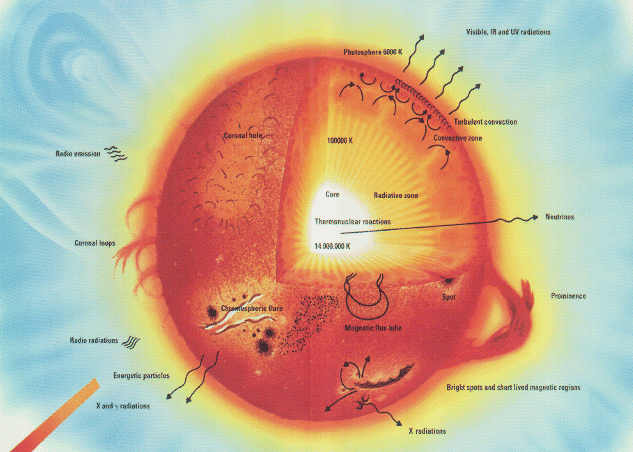

The temperature patterns in the Sun are not well understood. The core has a very high temperature of more that 15 million degrees Kelvin. As you move away from the heat producing core the temperature drops to about 6000 degrees at the photosphere, the effective surface of the Sun. The puzzling thing is that the temperature then rises again to more than 2 million degrees in the corona which is the furthest layer from the core. Researchers are currently investigating what might cause the Sun to have such a curious temperature profile.
Our Sun provides an exciting "laboratory" in which to do experiments. Because it is our nearest star scientists are able to investigate its behavior with various instruments from space as well as from earth. One day researchers hope solve all the mysteries of the Sun, but there is still a lot of work to be done!
To learn more about the different regions of our nearest star, click on the
categories below.


Go to the
Solar Classroom